We met by accident in the woods. I had hiked for a few miles already and he had just entered the trail.
Whenever I go into the woods, or on water, I am prepared to stay 72 hours if need be. Why 72 hours? Almost everyone injured or lost today is found alive, or dead, within 72 hours. So the goal is to have enough means and knowledge to sustain and or treat yourself if injured for three days. Even if I am going out just to take one picture I have all the important things with me to make three days in the woods uneventful, or a rescue possible should a rattle snake get me or a broken ankle. I always have a back pack on, or stowed in the canoe or kayak. And always around my neck a good bushcraft knife and fire steel.
My be-prepared list includes, beside cameras and the like, mosquito spray, extra watch, compass, a little fishing kit, some food, a small flash light, a couple of quarts of water, a poncho, and, if a long hike, a lightweight tarp and nylon hammock with bug net to suspend between trees, or crawl into on the ground. I always carry several ways to make a fire and locally an elderberry spindle and basswood base can be used to make a bow drill fire. If I am in predator country I include pepper spray and a firearm. I also have a cell phone, a back up on a different network, and a GPS. While I can get by in the woods with next to nothing — after all that is what I teach — I prefer not to. Be prepared, even more important at my heart-attack age.
As I said, we met by accident. He was a young fellow in a short-sleeve shirt and slacks. His equipment was a camera. He was prepared to take pictures (and in fact later did take one of a 13-foot alligator the small stream of Soldier’s Creek.) Our paths crossed when I happened to slip on a sand-bagged bank. He asked me if I was all right. Only my dignity was injured though later I would be black and blue in selected spots. As he was pleasant, late 20’s-something, we walked along together. Like the fellow who was the last expert on the slide rule I like to tell younger folks about the edible flora around them. I also knew the trails through the swamp and he did not. I thought him completely unprepared, a potential accident in the making; yet another reason to hike in tandem.
When I first pointed out a wild edible he said he would never eat a wild plant and didn’t know anything about them. That seemed like a common response to me. Yet, as we walked along he was quite astute and knew about many other things regarding the woods, such as camping techniques. He was actually quite insightful and well-informed about many things. All in all he was the kind of young man you’d wish your 25-year-old daughter would meet and marry. After a few miles I found out why.
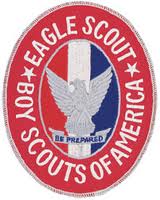 He was an Eagle Scout, and had bested his two older brothers who were also Eagle Scouts. Now that was a family aiming kids in the right direction. It was very clear he was launched well, prepared for life by his scouting experience. What trouble me was that someone could become an Eagle Scout and not know any edible wild plants. He also did not know the toxic ones. When I pointed out poison ivy he said he had never seen it before… a boy scout who did not know what poison ivy looked like. He took a picture.
He was an Eagle Scout, and had bested his two older brothers who were also Eagle Scouts. Now that was a family aiming kids in the right direction. It was very clear he was launched well, prepared for life by his scouting experience. What trouble me was that someone could become an Eagle Scout and not know any edible wild plants. He also did not know the toxic ones. When I pointed out poison ivy he said he had never seen it before… a boy scout who did not know what poison ivy looked like. He took a picture.
I realize scouting needs to change, keeping up with the times and all that. But, I would have thought wild foods would have been on the curriculum as much as a half a dozen ways to make fire. An Eagle Scout who does not know even a few edible plants almost seemed, to me, a contradiction in terms. Edible wild plants was something I presumed we should have had in common. However, on reflection I realize the problem was with me, not him, or scouting.
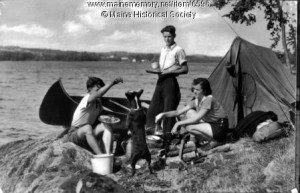 When scouting started a century ago its purpose was to make good men out of boys, and back then engaging them in bushcraft was the at-the-ready means. Said another way, the goal was to produce good men more than it was to go camping. Camping was just the then-contemporary vehicle to carry that out that cause. I presume the goal today is still as it was then; to produce good men out of boys. So maybe an Eagle Scout today does not have to be really good at knowing the wilderness. Maybe an Eagle Scout today does not have to know an edible plant. After all, my hiking companion turned out to be a very good young man. And that’s more important than eating a dandelion.
When scouting started a century ago its purpose was to make good men out of boys, and back then engaging them in bushcraft was the at-the-ready means. Said another way, the goal was to produce good men more than it was to go camping. Camping was just the then-contemporary vehicle to carry that out that cause. I presume the goal today is still as it was then; to produce good men out of boys. So maybe an Eagle Scout today does not have to be really good at knowing the wilderness. Maybe an Eagle Scout today does not have to know an edible plant. After all, my hiking companion turned out to be a very good young man. And that’s more important than eating a dandelion.
He’s also in good company. Here are some well-known Eagle Scouts, a few of whom you might find surprising: Henry Aaron – baseball player, home run king; William Bennett, former Secretary of Education; Michael Bloomberg – Mayor of New York City; Bill Bradley, basketball star and U.S. Senator; James Brady, press secretary to President Reagan;; Stephen Breyer – U.S. Supreme Court Justice; Walter Cronkite, journalist and commentator; William C. DeVries, M.D., transplanted the first artificial heart; Michael Dukakis, governor of Massachusetts, presidential candidate; Gerald Ford, 38th President of the United States; Steven Fossett, aviator, flew solo nonstop around the world in a hot air balloon and in an ultralight airplane; James Lovell, astronaut; Richard Lugar, U.S. Senator; J. Willard Marriott, Jr., president, Marriott Corporation; Michael Moore, author and filmmaker; Oswald “Ozzie” Nelson, big band leader (made Eagle at age 13); Sam Nunn, U.S. Senator; Ellison Onizuka, Challenger astronaut; H. Ross Perot, Chairman, EDS Corp,
presidential candidate; Rick Perry, governor, state of Texas, presidential candidate; Mike Rowe, star of “Dirty Jobs”; Donald Rumsfeld, Secretary of Defense; Harrison Salisbury, Pulitzer Prize winning author; Jeff Sessions, senator from Alabama, Steven Spielberg, film director/producer; Jimmy Stewart, actor; John Tesh, TV celebrity and pianist; Sam Walton, founder, Wal-Mart; Edward O. Wilson – Pellegrino University Professor and curator of entomology at the Museum of Comparative Zoology, Harvard University; and Elmo R. Zumwalt, Jr., admiral, Chief of Naval Operations.
I would call that a good track record.

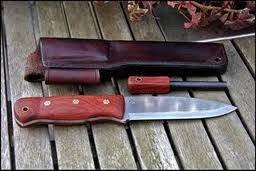
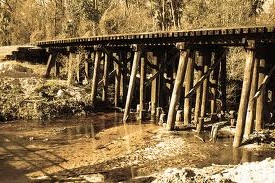
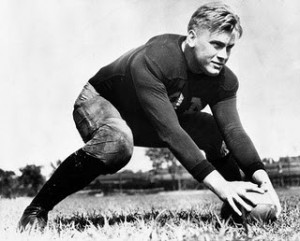
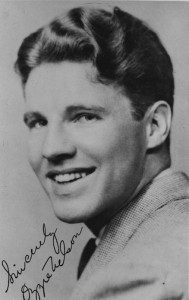

Yes my uncle is an Eagle Scout who like me (I went as far as the Webelos but was disillusioned with the BSA), when in the BSA was never taught anything having to do with wilderness skills, primitive skills, or bushcraft. So I read, learn, and practice skills kind of self-taught in a way but in others not so much. The local scout master and troop here where I live now is totally different than where I was when I was in the scouts. They do practice the skills. It all depends on whether there is good leadership or bad leadership. I volunteered my knowledge and skills to the local scout master here but he has the aid of the local Seminole tribe that make my skills look puny by comparison. So he doesn’t need my help although he knows he can call on me if needed. Don’t get me wrong, my uncle is about the same as the young man you describe. But civics is not the skills that young men need to stay alive in the woods. There needs to be a basis of skills on which to build so that the scout “can” have something to offer in civic matters. Civics was never meant to be a part of scouting. Wilderness skills, core family principles, and faith were the original intent of the Powells who founded the scouting movement. The goal of scouting was to keep young men alive in the woods by giving them the knowledge and skills they needed and as wilderness skills preparation for military service. Civics (the study of rights and duties of citizenship) was the result of the civics movement that overtook the scouts and the original goal and intent of scouting as set down by the Powells. This civics movement was due to misguided parents who did not want their children taught dangerous things when in reality it is far more dangerous for their children to be ignorant of it and lack the knowledge and skills they need to stay alive. There is an awful lot of coddling going on and there may be a real shock of reality one day if our unnatural artificial society ever breaks down. I hope not but it could happen and civics won’t save folks lives no matter how well intentioned but knowledge and skills might. This is why preparation and skills are so important. Prepare for the worst, hope for the best.
[quote]I always have a back pack on, or stowed in the canoe or kayak. And always around my neck a good bushcraft knife and fire steel. My be-prepared list includes, beside cameras and the like, mosquito spray, extra watch, compass, a little fishing kit, some food, a small flash light, a couple of quarts of water, a poncho, and, if a long hike, a lightweight tarp and nylon hammock with bug net to suspend between trees, or crawl into on the ground. I always carry several ways to make a fire and locally an elderberry spindle and basswood base can be used to make a bow drill fire. If I am in predator country I include pepper spray and a firearm. I also have a cell phone, a back up on a different network, and a GPS. While I can get by in the woods with next to nothing — after all that is what I teach — I prefer not to. Be prepared, even more important at my heart-attack age.[/quote]
My day pack is similar to yours with only minor differences. But that is if I am on the trails far away from my vehicle. I have a stocked multi-day pack for longer expected time in the woods. I can get by without any of that if need be but like you, I prefer not to unless I have to. I can get by with just what is in my pockets if I have to. I can do a lot with just a Hiker model Swiss Army Knife, pocket sharpener, mag stick (magnesium spark block), eye glasses, bandana, and shoe strings. I could probably get by with less than that but the knife and sharpener is a must. There are no rocks for breaking into an edge here. John and Geri McPherson in Kansas go naked into the wilderness, meaning they don’t carry anything but the clothes on their back.
http://www.prairiewolf.net/index.cfm
I taught my boys some of the basic plants. Every year at summer camp there were sumac trees along the trail that were ripening while we’re were there and every year it was customary to make sumac~aide. Luckily no one ever had an allergic reaction and it was a big hit. No snakebites although we killed and ate a rattlesnake once.
Edible wild plants used to be in the scouting handbook but not for years. Why they were taken out I can only guess.
So now it truly comes down to the leadership’s knowledge and that can be hard to find now.
also an Eagle… Wilderness Survival merit badge was NOT required for Eagle when I went through, but I did earn it, and even taught it my last summer on staff at camp. Still interested in edible wild plants, especially the escaped ones in the South which are considered weeds…
Thank you for insightful, informative, thought-provoking, and entertaining article after article. I have been reading through nearly each one this week. Reading your articles has awakened many memories of my youth as a Scout.
I earned my Eagle Scout rank in 1976 and my certificate was signed by President Gerald Ford. Back then, we did learn so much about the flora and fauna around us, as well as in other parts of the country. We even had something in Alabama for Boy Scouts called Woodlore Camping School, where we not only learned about edible and toxic plants, but how to build useful items (latrine tripod came in handy when someone did not clean the patrol mess kit and there were stomach upsets) by pioneering methods with rope, knife, ax, and bow saw. Attendance was by invitation only, as it was very intense outdoor living for a week, so they only chose the Scouts they thought could handle the entire week.
These days I am saddened by what has become of the Boy Scouts of America, but I am very happy to see that Trail Life USA is now increasing in numbers each year. It has restored for boys what BSA abandoned in the past three decades.
www,traillifeusa.com
Again, much appreciation to you for your sharing your research and insights.